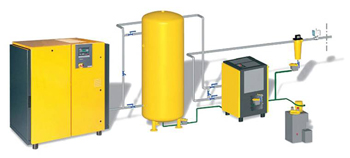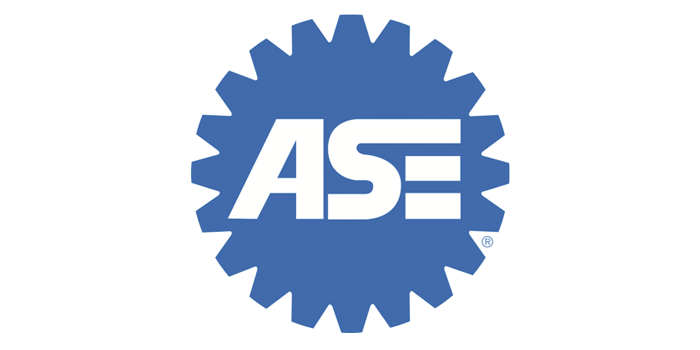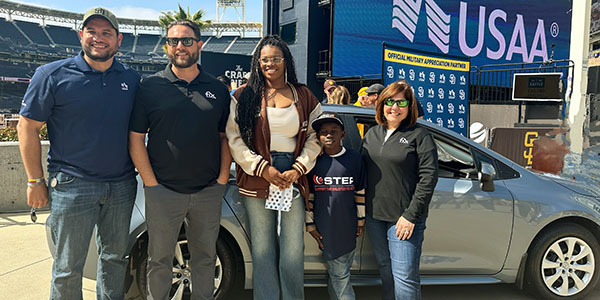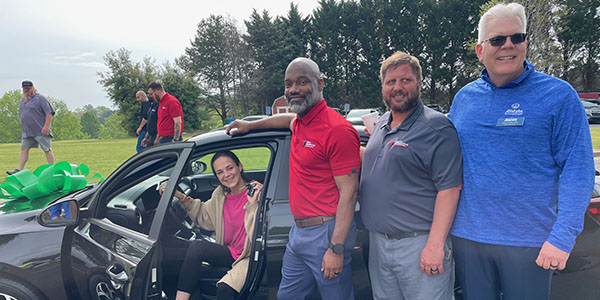
 Kaeser Compressors announced that it has published tips on where to place the receiver tank in a compressed air system. Michael Camber, marketing services manager for Kaeser, says the question comes up frequently.
Kaeser Compressors announced that it has published tips on where to place the receiver tank in a compressed air system. Michael Camber, marketing services manager for Kaeser, says the question comes up frequently.
“It’s often taken for granted, but the tank performs several vital functions and is worth talking about,” says Camber. “The size and placement really depends on what you need the tank to do.”
Camber listed the variety of things shop owners might want their tanks to do:
• Remove liquid moisture formed at the discharge of the compressor.
• Provide a cooling zone to allow moisture vapor (and oil aerosols) to condense into liquid.
• Create a volume buffer that reduces compressor cycling on and off.
• Provide volume for users that are not getting stable air supply or for large, periodic demands that exceed the capacity of the compressor.
• Reduce compressor run time and save energy.
Camber says that most of the time, the receiver tank is very close to the compressor, and they’re often sold as one unit, which helps reduce total run time and frequent starting and stopping, saving some energy and also reducing wear and tear on the compressor.
“In the compressed air business, this tank is sometimes called a ‘wet tank’ since it collects a lot of liquid,” Camber explains. “Putting the wet tank a bit further away lets the air cool and more moisture condense before you drain it away, but whether you put some distance between the compressor and tank or not, the wet tank should be before the dryer. This reduces liquid load on the dryer and its drain. If you have a properly sized refrigerated dryer, it’s unnecessary to try to put distance between the compressor and tank.”
Camber cautions that if you place the wet tank away from the compressor, be sure not to undersize the piping between them or you’ll have high pressure drop and cause the compressor to short cycle (start and stop too much). In addition, he says you’ll get water in the line before the tank.
“So be sure to install a good automatic drain on the tank and avoid any upward slant in the piping to the tank to prevent water from collecting at/in the compressor,” says Camber. “Tanks have multiple access points, and it’s a good practice to pipe in low and pipe out high if possible (see diagram). Piping in high and out high is also okay.”
Camber says that “ideal” textbook systems have both a wet tank (to control cycling and drain moisture before the dryer) and a larger dry tank after all the dryers and filters for storage. This is widely recommended in industrial settings, Camber notes, but in smaller shops it’s not common for cost and space reasons.
The key, Camber states, is the order of the system, and for most body shop systems the order below is appropriate:
• Compressor
• Tank with automatic drain valve (pipe in low, pipe out high)
• Refrigerated dryer with automatic drain
• Coalescing oil filter with automatic drain
• Spraybooth dryer (membrane or desiccant or breathing air system) if desired
Camber notes that in this arrangement, a “wet tank” is selected. This is because most collision shops are concerned about moisture removal. When placed after the compressor, the tank serves to separate a large part of the moisture that naturally occurs during the compression process before the air enters the dryer. While dry tank storage is helpful, says Camber, it’s typically not as important for collision shops as moisture removal.
The green piping shown in the diagram takes the condensate from the tank, dryer and filter into a condensate separator.
“If you have issues getting a stable supply of air to certain areas in the shop, but your compressor is large enough, consider installing an additional tank near those points of use,” Camber says. “If your installation has special needs, consult a compressed air systems specialist for assistance in designing your system layout. In addition to making sure your system will give you the air quality you need for your shop, they can take into account any special considerations your shop may have.”
More information:













